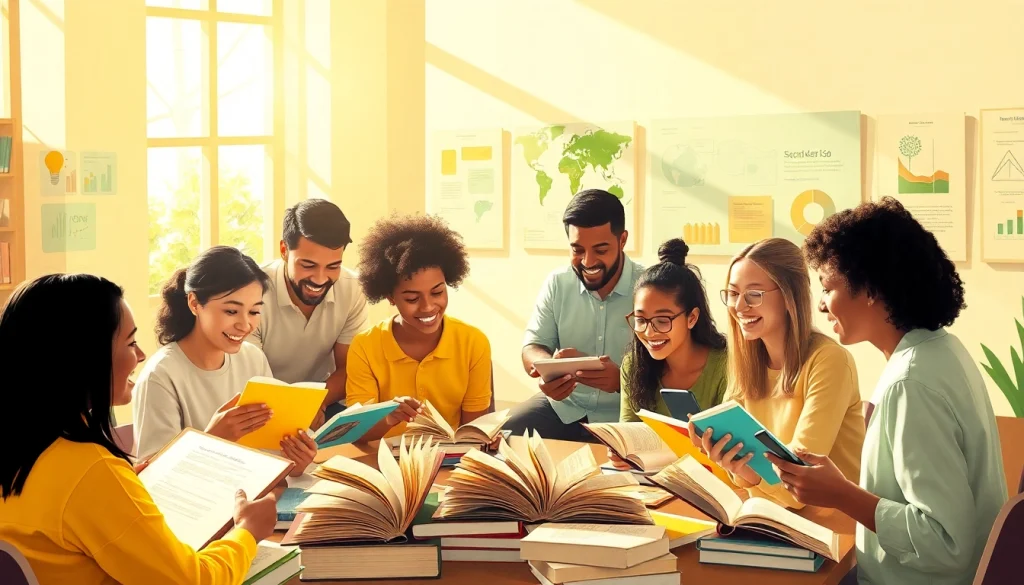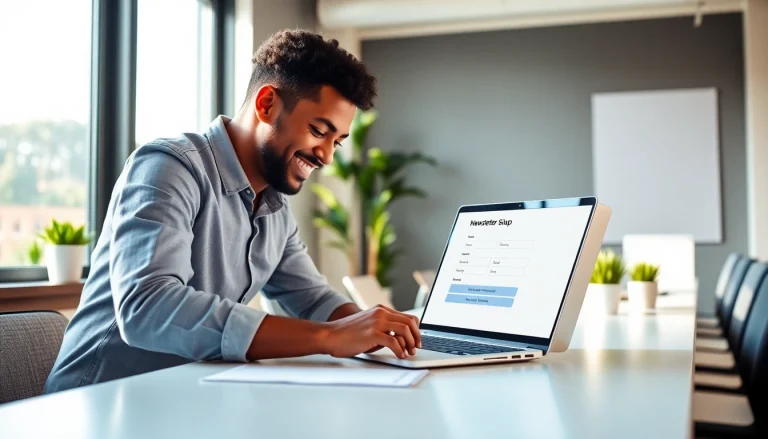
Understanding Educational Resources
Defining Educational Resources
Educational resources encompass a broad range of materials utilized for teaching, learning, and research purposes. They include textbooks, videos, slides, lesson plans, and other instructional assets that facilitate a structured learning experience. Over the years, the definition of educational resources has evolved to encompass not only traditional media but also digital formats that cater to diverse learning styles. The rise of the internet has particularly accelerated this evolution, making information more accessible than ever.
The Importance of Accessible Learning Materials
Accessible learning materials play a vital role in education, ensuring that all learners, regardless of background or ability, have the right tools to succeed. Ensuring access to high-quality educational resources can level the playing field, enabling students from various socio-economic backgrounds to participate fully in the educational process. Accessibility not only promotes equity within the education system but also fosters an inclusive environment where all students can thrive.
Evolution of Educational Resources
The evolution of educational resources can be traced back to the early days of formal education, where physical materials such as chalkboards and textbooks were the norm. With the advent of technology, educational resources have transformed significantly. The digital era introduced video tutorials, online courses, and mobile learning—a shift that has made learning more flexible and personalized. Understanding this evolution helps educators assess the effectiveness of these resources and adapt their teaching methods to meet contemporary learner needs.
Types of Educational Resources
Open Educational Resources (OER)
Open Educational Resources (OER) are a significant innovation in educational materials. Defined as teaching, learning, and research materials that are freely accessible and openly licensed, OER includes everything from course textbooks and lecture notes to software and multimedia content. The primary advantage of OER is that they are designed to improve educational access and equity, allowing institutions to share and adapt resources freely. This initiative aligns with the global push towards more inclusive education systems, making learning materials available to anyone regardless of location or financial capability.
Digital vs. Print Resources
In the digital age, the distinction between digital and print resources has become crucial for educators and learners alike. Digital resources, which include eBooks, online courses, and interactive applications, offer flexibility and accessibility that print resources cannot match. For instance, digital materials can be updated easily to reflect new information or trends, enabling learners to stay current with the latest knowledge. Meanwhile, print resources—despite facing challenges from digital media—remain popular due to their tactile nature and the absence of the distractions typically found in online formats. Educators must weigh the benefits of both resource types and select based on their specific teaching goals and the needs of their students.
Interactive Tools and Multimedia
Interactive tools and multimedia are rapidly transforming the way education is delivered. These resources provide engaging learning experiences that cater to various learning styles. Tools such as educational apps, simulations, and virtual classrooms facilitate hands-on learning, encouraging students to participate actively rather than passively absorb information. Integrating multimedia resources—videos, infographics, and podcasts—can enhance comprehension and retention. For instance, a complex scientific concept may be more easily understood through a visually-rich animation than through traditional text alone.
Benefits of Utilizing Educational Resources
Improving Educational Outcomes
The use of educational resources significantly contributes to improving educational outcomes. By providing diverse materials that cater to various learning preferences, educators can enhance student engagement and understanding. Studies indicate that using a mix of resources, including OER, multimedia, and interactive tools, can lead to higher retention rates and academic success. For example, a blended learning approach that combines traditional methods with digital resources allows for a more comprehensive understanding of subjects among students.
Facilitating Lifelong Learning
In today’s fast-paced world, the concept of lifelong learning has become essential. Quality educational resources equip individuals with the skills and knowledge necessary to adapt to new challenges and continue their professional development. Online courses, webinars, and digital libraries allow learners to pursue interests outside traditional schooling, fostering a culture of continuous education. By providing easy access to such resources, educational institutions can encourage personal growth and curiosity beyond the classroom.
Enhancing Teacher Resources
For educators, the availability of robust educational resources greatly enhances instruction methods. Teachers can utilize pre-made lesson plans, multimedia presentations, and assessment tools to streamline their preparation processes. This not only saves time but also enriches the learning experience for students. Additionally, sharing resources within a professional learning community can lead to collaborative approaches that inspire innovative teaching practices. As a result, teachers are better equipped to meet diverse student needs and improve overall classroom dynamics.
Challenges in Accessing Educational Resources
Digital Divide and Accessibility Issues
Despite the proliferation of educational resources, challenges remain—most notably the digital divide which affects access to necessary technologies and the internet. Students in rural or low-income areas may struggle to access digital materials, leading to disparities in educational attainment. Furthermore, even within urban settings, accessibility challenges continue to exist for students with disabilities. Concerns regarding whether resources are designed to be inclusive can significantly affect learning experiences. Educators and policymakers must therefore advocate for equitable access to digital tools while ensuring that all resources comply with accessibility standards.
Quality Control of Resources
With the vast number of available educational resources, ensuring quality becomes crucial. Not all resources are created equal; some may lack rigorous peer review or may not effectively align with educational standards. Educators should develop a discerning eye, evaluating resources based on design, accuracy, and pedagogical effectiveness before implementation in the classroom. Creating a reliable framework for assessing resource quality can help educators make informed decisions and contribute to improved learning outcomes.
Understanding Licensing and Copyrights
One of the complexities surrounding the use of educational resources involves understanding licenses and copyrights. While many OERs are openly licensed, specific terms dictate how they can be used, shared, or modified. Educators need a foundational understanding of copyright law to navigate the use of proprietary materials responsibly. Training sessions on copyright issues may prove beneficial, ensuring that educators can utilize a wider range of resources while respecting intellectual property rights.
Implementing Educational Resources Effectively
Strategies for Educators
To maximize the potential of educational resources, educators must adopt strategic approaches tailored to their teaching environment. First, identifying the specific needs and learning goals of students is crucial. Following this, educators can curate appropriate resources while incorporating varied formats to cater to multiple learning styles. Additionally, training and professional development opportunities can empower educators to discover and utilize the most effective resources. Lastly, soliciting student feedback on the usefulness and enjoyability of resources can guide future selections and adaptations.
Collaborative Learning Environments
Creating collaborative learning environments can significantly enhance the effectiveness of educational resources. Encouraging group work and peer-to-peer interaction allows students to engage deeply with the material. Utilizing platforms that facilitate collaboration, such as shared documents and communication tools, can enhance these experiences further. Moreover, encouraging students to co-create resources—like group presentations or collaborative project work—can deepen their understanding while fostering teamwork skills.
Measuring the Impact of Resources on Learning
Lastly, measuring the impact of educational resources on student learning is essential for understanding effectiveness. Educators can utilize various assessment methods, such as surveys, tests, and observational studies to gauge how well resources facilitate learning. Analyzing this data allows for continuous improvement in resource selection and implementation strategies. Schools may also consider adopting learning analytics systems that track student engagement and success, providing insights into how resources contribute to educational outcomes.






